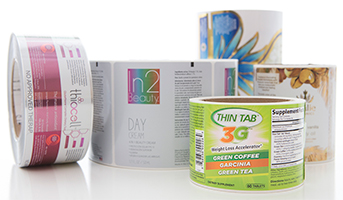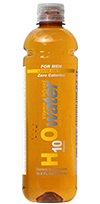 In Label Adhesives Guide Part 1: Types and Properties, we covered the three main types of pressure-sensitive adhesives and how basic properties (initial tack, cold flow, and service range temperature) vary – even if the adhesives are classified as the same “type.” Part 2 of our guide adheres to the same theme. It contains an overview of the factors that affect adhesive performance. Stick right where you are and get ready to learn even more about label adhesives!
In Label Adhesives Guide Part 1: Types and Properties, we covered the three main types of pressure-sensitive adhesives and how basic properties (initial tack, cold flow, and service range temperature) vary – even if the adhesives are classified as the same “type.” Part 2 of our guide adheres to the same theme. It contains an overview of the factors that affect adhesive performance. Stick right where you are and get ready to learn even more about label adhesives!
Performance Factors to Know
Pressure-sensitive adhesives are available in different levels of stickiness. This affects how quickly they absorb into the surface they apply to. But along with a basic level of stickiness, there are other factors outside of the adhesive that can affect overall performance. Below are seven considerations outlined by the material suppliers that we consider, and you should consider too when selecting label materials.
Note: A “substrate” is the material, surface or container that comes in direct contact with the adhesive and face stock (i.e. the paper or film material your artwork prints on).
Composition, Texture, and Shape
- Composition: The composition of the substrate can affect the adhesive’s ultimate strength and bond. Plastic, glass, paper, cardboard, metal, and fabric all have different compositions which can affect how an adhesive will perform. Our standard permanent adhesive works well on most of these surfaces. Keep in mind that special adhesives may require extra considerations to ensure it’s compatible with the substrate’s composition.
- Texture: A substrate’s texture matters because it can affect how well the adhesive bonds. Rough textures are harder for adhesives to stick to because there’s less surface area for the adhesive to grip. Cases like this require a more aggressive adhesive to achieve an acceptable level of adhesion.
- Shape: Curves and angles can be difficult areas to label – especially if the label face stock is more rigid. PSAs require some time to flow into the substrate to achieve ultimate adhesion and when a rigid label applies to a curved surface, the label’s stiffness can cause it to lift up from the surface before the adhesive can fully bond. If that curved substrate also has a rough surface, you have an even tougher challenge. At this point, consider using a more flexible face stock or a more aggressive adhesive.
Cleanliness, Temperature, Moisture Contact, and Service Condition
- Cleanliness: Whether it’s dirt, oil, frost, dust, etc., it’s important that the surface a label applies to is clean. An unclean surface prevents a label from achieving ultimate adhesion. In certain manufacturing processes, contamination is bound to happen. If having consistently clean surfaces isn’t an option, special adhesives help tackle issues.
- Temperature: Temperature also plays a role in how well an adhesive can flow into the substrate. Extremely low temperatures can be problematic for adhesives. Adhesives have “minimum application temperatures,” which are the lowest temperature they can be applied, and still have tack, before crystallizing and turning solid. If you must apply your labels in a cold environment, special adhesive would be needed. Specialized “cold temp” or “all temp” adhesives are used for application temperatures as low as -10 to -20 degrees F.

- Moisture contact: Labels printed on paper materials don’t hold up well against direct moisture or humidity in the air. If the paper label has limited exposure to moisture, a laminate applies over the paper to protect the material’s integrity and printed image. Film labels are more durable against moisture contact, but clear film has some special adhesive considerations. When clear labels have an emulsion adhesive, and they apply to a wet or moist surface, the adhesive can re-emulsify turning the color milky white. The discoloration will go away over time but may take days or even weeks to happen.
- Side note: An emulsion is a mixture of two liquids that can’t mix (e.g. oil and water) without an emulsifier addition.
- Service conditions: Keep in mind the various elements your labels encounter over their lifespan because of special materials required to ensure label quality. Moisture, abrasion, heat, cold, oil, dirt…the list of potential service conditions are practically limitless!
Summary
As you can see, label adhesives can act in many different ways depending on their environment and substrate. Fortunately, there are things you can do to ensure that the one you choose is right for your labeling needs. Be sure to check out our quick guide, Surefire Tips for Selecting a Label Adhesive. This gives a better idea of how to apply your new knowledge of pressure-sensitive adhesives for whatever labels you need.
Start on your labels with our instant online quote tool! For more information, please call 1-800-475-2235 or email sales@consolidatedlabel.com.


